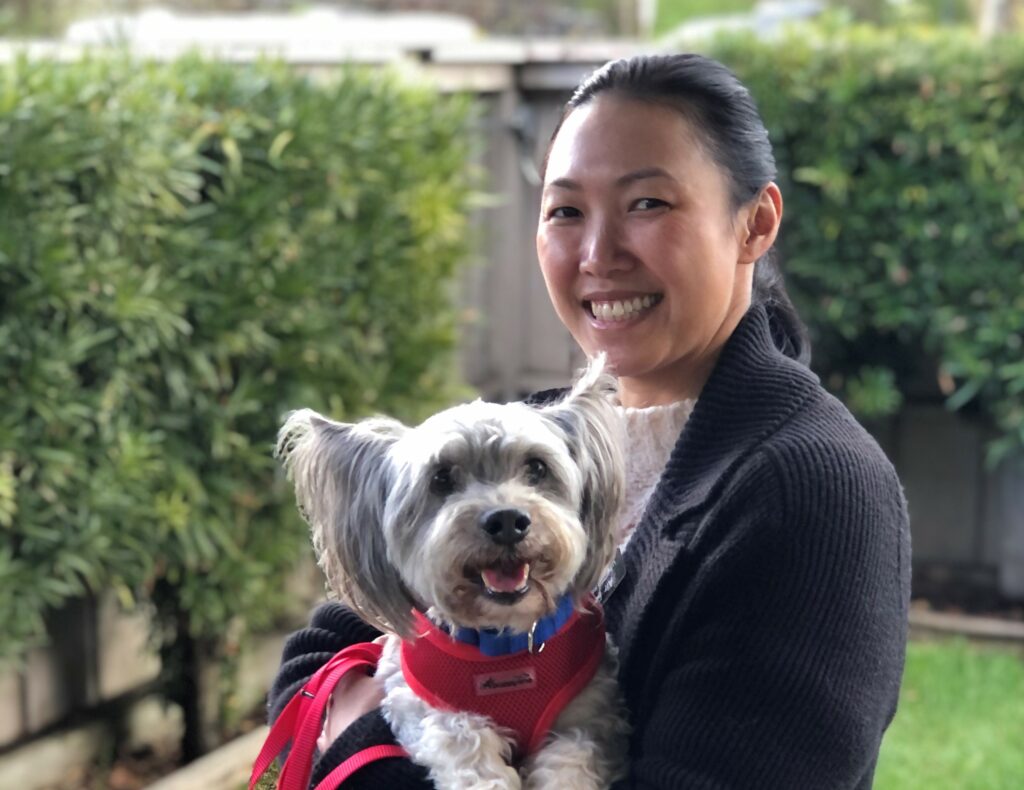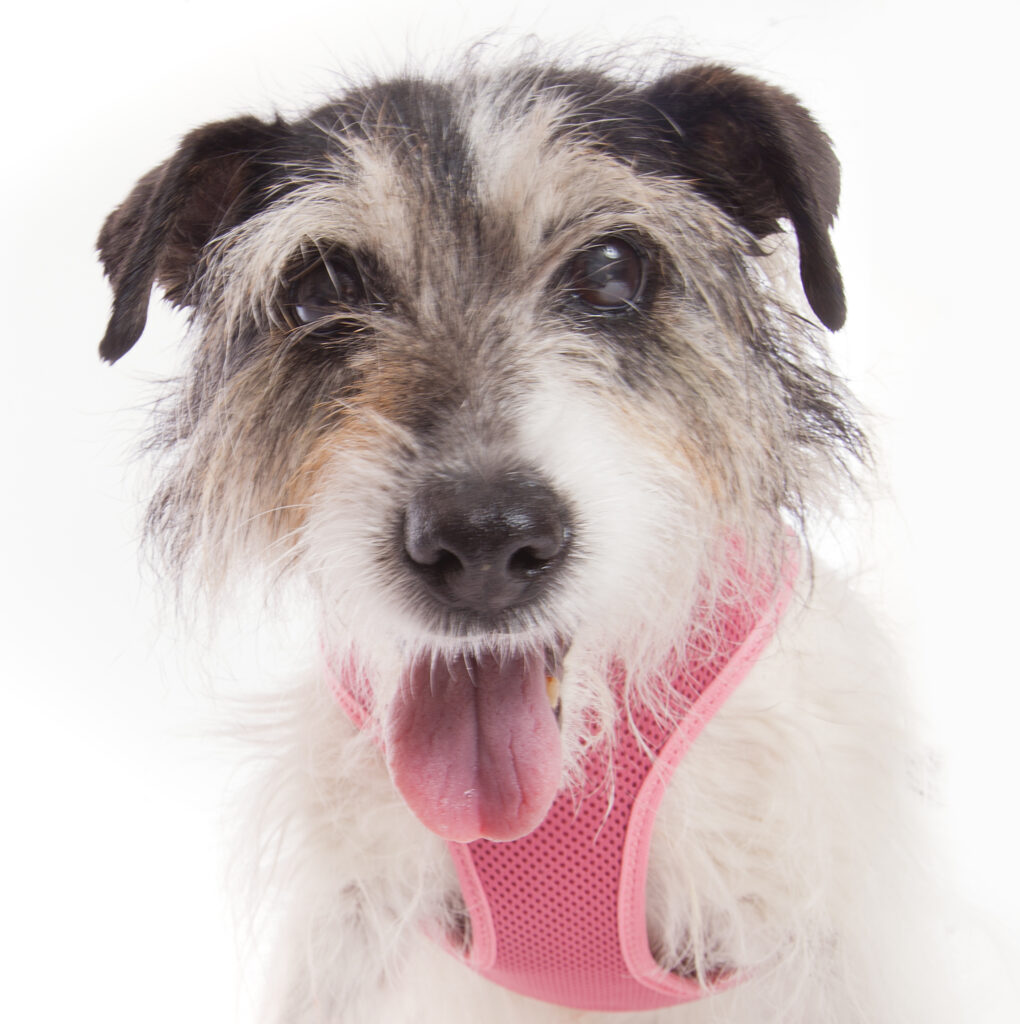I’ve fallen hopelessly in love dozens of times over the past decade. Apparently, I’m just a girl who can’t say no, immediately opening my heart and home to every new sweetie who comes my way. Age, breeding and even gender never matter to me.
I’m addicted to caring for foster dogs.
The furry faces and soulful eyes of abandoned pups do me in every time. My first foray into fostering was with a black toy poodle named Alfie, who came from Muttville, the Bay Area’s senior dog rescue. Since then, I’ve cared for so many that I’ve lost count. Some stay only a few days, and others, like my current foster dog Jordan who had health issues, live with me for months.
Jordan, a four-year-old, 90-pound Alaskan Malamute/Siberian husky mix, was dumped at the Peninsula Humane Society & SPCA. The family he lived with since he was a puppy said they were moving, a common reason given for surrendering a dog. The notes on Jordan’s paperwork indicate he stayed outside on a balcony in Daly City for most of his life.
Unfortunately, Jordan, who started out as a friendly fellow, emotionally shut down in the shelter after being there for two months. He no longer wanted attention, became unresponsive and even growled at a staff member. With Jordan’s spirit broken, it was clearly time for him to leave the noisy, fast-paced shelter.
Shelters often work with rescues to help find homes for animals, particularly those with special needs. The Bay Area Siberian Husky Rescue, a small rescue focusing on Northern breeds, took Jordan into their foster program. I volunteered to foster the pooch, and brought him home to Sausalito.
Foster dogs and cats live in a home, and are treated as a member of the family, until they’re adopted. The foster parent gets to know the pet’s personality, and works with the animal on socializing and training. Sometimes, as with Jordan, the foster person nurses a pet back to health as they recover from medical conditions or surgeries. Mostly, the foster family provides love and stability.
“All dogs thrive better in a home,” said Sherri Franklin, founder and CEO of Muttville. “Even though we have a shelter, we stay foster based. It’s best for the dog and the adopter. We’re able to give an adopter a clearer picture of what sort of dog they’re bringing home. We can matchmake a dog with a person in a more confident way.”
Most shelters remained closed to the public during the pandemic, and relied on foster homes to care for their animals. The foster program was such a success for Marin Humane in Novato, they have decided to continue the model of keeping as many pets as possible in foster homes. In fact, they recently tripled the size of their foster program by partnering with Hopalong Animal Rescue.


“We found that we had less sickness among pets in foster homes,” said Lisa Bloch, director of marketing and communications at Marin Humane. “Especially with cats, because stress can often lead to upper respiratory infections.”
Kittens also benefit from staying in foster homes. Spring marked the start of kitten season, and shelters are now overflowing with the tiny felines.
“Our foster program is essential, because we bring in kittens from shelters across the state that have too many kittens to handle,” said Asher Belden, adoption program manager of the Humane Society of Sonoma County. “If we didn’t take the kittens, they might be euthanized.”
The agency has taken in 329 kittens this season, with 60 in foster care right now. People are flocking to their kitty adoption events.
During the pandemic lockdown, pets available for adoption were in high demand, an unusual and gratifying phenomenon, according to animal welfare groups. Some rescues and shelters are still seeing more adoption applicants than in pre-pandemic times.
“It was an explosive year,” said Hannah Houston, director of foster and adoption at Dogwood Animal Rescue, based in Sonoma County. “It became abundantly clear during Covid that people were suffering from loneliness and isolation. They didn’t just want a dog, they needed a dog.”
Dogwood Animal Rescue adopted out 750 dogs and cats in 2020, close to double the amount of a typical year. Each dog had at least 25 applicants, and 60 people were on the kitten waiting list.
Adoption applications during the pandemic increased by 400% at Muttville, the senior dog rescue. Even dogs that are typically harder to place, such as blind or diabetic dogs, were adopted quickly.


With last week officially marking the end of the lockdown in the Bay Area, many pet parents are heading back to the office for the first time in more than a year. There have been dire headlines in the media about people giving up their newly adopted companions now that we’re on the move again.
“The pandemic brought about a pet adoption boom—but now, U.S. shelters are struggling to take in growing numbers of cats and dogs,” the BBC reported last month.
Not so, according to Bay Area shelters and rescues. The agencies say the extra time and effort they invested to prepare adopters for the inevitable return to normalcy was well worth it.
“We’re not seeing returns at Muttville as people go back to work,” Franklin said. “Most of us in the adoption world talked to the adopters about their expectations and their plans for when they go back to work. We made sure people thought this through, because it’s a commitment. Having these conversations during the adoption process really helped.”
Discussions with pet owners have now shifted to how to leave their dogs and cats at home alone. It’s not just the animals suffering from separation anxiety—humans are having a hard time adjusting, too.
Experts recommend initially leaving your pet for a few minutes, exiting and returning without fanfare. Come and go frequently, gradually extending the amount of time you’re away.
“It’s also helpful to increase their exercise,” Bloch, of Marin Humane, said. “Take your dog on an extra-long walk or jog. Play with your cats as well. Leave toys at home that provide mental stimulation.”
Although we managed to foster and adopt in record numbers during the pandemic, the never-ending flow of stray and abandoned animals entering shelters and rescues continues. Fostering and adopting remain just as important in our post-pandemic world.
When I picked up my foster dog Jordan from the shelter, I didn’t think he’d be with me for seven months and counting, far longer than any of my other fosters. It will be bittersweet when Jordan goes to his forever home, but I’ll dry my tears quickly and make room for the next foster dog who will, no doubt, steal my heart again.











